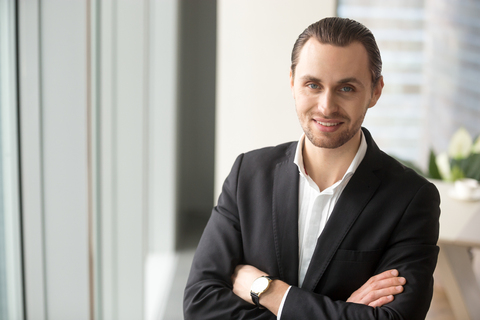In the rapidly evolving landscape of digital marketing, influencer marketing has emerged as a powerful tool for brands seeking to connect with their target audiences. This strategy leverages the reach and credibility of individuals who have cultivated a loyal following on social media platforms. The effectiveness of influencer marketing campaigns, however, is a topic of ongoing debate among marketers, brands, and consumers alike.
As businesses invest significant resources into these campaigns, it becomes crucial to assess whether they deliver tangible results or merely serve as a fleeting trend. The rise of social media has transformed the way brands communicate with consumers. Traditional advertising methods, such as television commercials and print ads, are increasingly being overshadowed by the authentic and relatable content produced by influencers.
These individuals often share personal experiences and recommendations, which can resonate more deeply with their followers than conventional advertisements. As a result, brands are eager to collaborate with influencers to tap into their established audiences and enhance their visibility in a crowded marketplace. YouTube Influencer Database is a valuable resource for finding popular content creators on the platform.
Key Takeaways
- Influencer marketing campaigns can be effective in reaching a targeted audience and driving engagement.
- The success of an influencer marketing campaign depends on the authenticity and relevance of the influencer to the brand and its audience.
- It is important to set clear goals and metrics for measuring the success of an influencer marketing campaign.
- Collaborating with micro-influencers can be just as effective, if not more, than working with mega influencers.
- Building long-term relationships with influencers can lead to more authentic and impactful campaigns.
The Mechanics of Influencer Marketing
At its core, influencer marketing involves partnerships between brands and individuals who have the power to influence the purchasing decisions of their followers. This collaboration can take various forms, including sponsored posts, product placements, and brand ambassadorships. Influencers typically create content that showcases the brand’s products or services in a way that feels organic and authentic to their audience.
This approach aims to foster trust and credibility, as consumers are more likely to respond positively to recommendations from someone they admire or relate to. The effectiveness of these campaigns often hinges on the selection of the right influencer. Brands must consider factors such as the influencer’s niche, audience demographics, engagement rates, and overall reputation.
For instance, a beauty brand may choose to partner with a makeup artist who has a strong following among young women interested in cosmetics. By aligning with an influencer whose values and aesthetic resonate with their target market, brands can enhance the likelihood of a successful campaign. Additionally, micro-influencers—those with smaller but highly engaged followings—are gaining traction as they often boast higher engagement rates and more authentic connections with their audiences.
Case Studies of Successful Campaigns

One notable example of a successful influencer marketing campaign is Daniel Wellington’s collaboration with various social media influencers. The watch brand capitalized on the power of Instagram by sending free watches to influencers in exchange for posts featuring their products. This strategy not only generated buzz around the brand but also created a sense of exclusivity and desirability among consumers.
The campaign’s success can be attributed to the carefully curated selection of influencers who aligned with the brand’s aesthetic and values, resulting in a significant increase in sales and brand awareness. Another compelling case is Glossier, a beauty brand that has effectively utilized influencer marketing to build its identity. Glossier’s approach involves engaging everyday consumers as influencers rather than relying solely on traditional beauty gurus.
By encouraging customers to share their experiences with Glossier products on social media, the brand has fostered a community-driven marketing strategy. This grassroots approach not only amplifies authentic testimonials but also creates a sense of belonging among users, further solidifying Glossier’s position in the competitive beauty market.
Measuring Effectiveness: Metrics and KPIs
To determine the effectiveness of influencer marketing campaigns, brands must establish clear metrics and key performance indicators (KPIs). Commonly used metrics include engagement rates, reach, impressions, website traffic, and conversion rates. Engagement rates—calculated by dividing the total interactions (likes, comments, shares) by the number of followers—provide insight into how well the audience is responding to the content.
A high engagement rate often indicates that the influencer’s audience is genuinely interested in the brand’s message. Additionally, tracking website traffic generated from influencer campaigns can offer valuable insights into consumer behavior. Brands can use unique tracking links or discount codes to measure how many users visit their site or make purchases as a direct result of an influencer’s promotion.
This data allows marketers to assess the return on investment (ROI) of their campaigns and make informed decisions about future collaborations. However, it is essential to recognize that not all successful campaigns will yield immediate sales; some may focus on building brand awareness or fostering long-term relationships with consumers.
Challenges and Limitations
Despite the potential benefits of influencer marketing, several challenges and limitations can hinder its effectiveness. One significant concern is the issue of authenticity. As influencer marketing becomes more mainstream, consumers are increasingly aware of sponsored content and may become skeptical of influencers’ motives.
If followers perceive an influencer as inauthentic or overly commercialized, it can lead to diminished trust and engagement. Brands must navigate this delicate balance by ensuring that their partnerships feel genuine and align with the influencer’s established persona. Another challenge lies in measuring the true impact of influencer campaigns.
While metrics such as engagement rates and website traffic provide valuable insights, they may not capture the full picture of a campaign’s effectiveness. For instance, brand sentiment and consumer perception are more challenging to quantify but play a crucial role in determining long-term success. Additionally, the rapidly changing nature of social media algorithms can affect visibility and engagement rates, making it difficult for brands to predict outcomes consistently.
The Future of Influencer Marketing

As digital landscapes continue to evolve, so too will influencer marketing strategies. The rise of new platforms such as TikTok has introduced fresh opportunities for brands to engage with younger audiences through short-form video content. Influencers on these platforms often employ creative storytelling techniques that resonate with viewers in unique ways.
Brands must adapt their approaches to align with these emerging trends while remaining authentic and relatable. Moreover, the growing emphasis on diversity and inclusivity in marketing is reshaping influencer partnerships. Consumers are increasingly seeking representation in advertising, prompting brands to collaborate with influencers from diverse backgrounds and experiences.
This shift not only enhances brand credibility but also fosters a sense of community among consumers who feel seen and heard by the brands they support.
In conclusion, while influencer marketing campaigns can be highly effective when executed thoughtfully, they are not without their challenges. Brands must carefully consider their objectives, select appropriate influencers, and establish clear metrics for measuring success. As the digital landscape continues to evolve, staying attuned to emerging trends and consumer preferences will be essential for brands looking to harness the full potential of influencer marketing.
Ultimately, the effectiveness of these campaigns will depend on their ability to foster genuine connections between brands and consumers in an increasingly crowded marketplace.
FAQs
What is influencer marketing?
Influencer marketing is a type of marketing that focuses on using key leaders to drive a brand’s message to the larger market. These influencers can be well-known celebrities, but more often they are Instagram or YouTube personalities with a huge niche following who can help spread the word about a product or service through their social channels.
What makes an influencer marketing campaign effective?
An effective influencer marketing campaign is one that reaches the target audience in an authentic and engaging way. It should align with the influencer’s personal brand and resonate with their followers. The campaign should also result in increased brand awareness, engagement, and ultimately, sales.
What are some examples of successful influencer marketing campaigns?
Some successful influencer marketing campaigns include Daniel Wellington’s collaboration with various fashion influencers, Gymshark’s partnerships with fitness influencers, and SugarBearHair’s promotion by beauty and lifestyle influencers. These campaigns effectively leveraged the influencers’ credibility and reach to drive brand awareness and sales.
Are influencer marketing campaigns truly effective?
The effectiveness of influencer marketing campaigns can vary depending on various factors such as the choice of influencers, the authenticity of the campaign, and the relevance to the target audience. When executed well, influencer marketing campaigns can be highly effective in reaching and engaging with a specific audience. However, it’s important to measure the success of these campaigns through metrics such as engagement, reach, and conversions.















